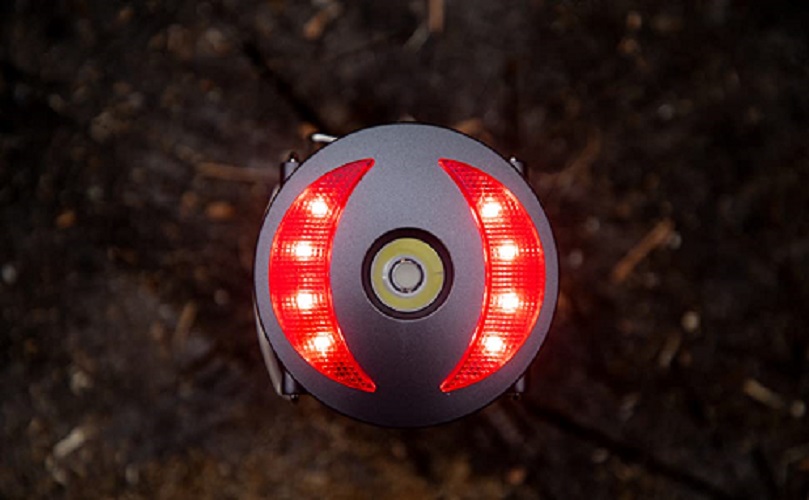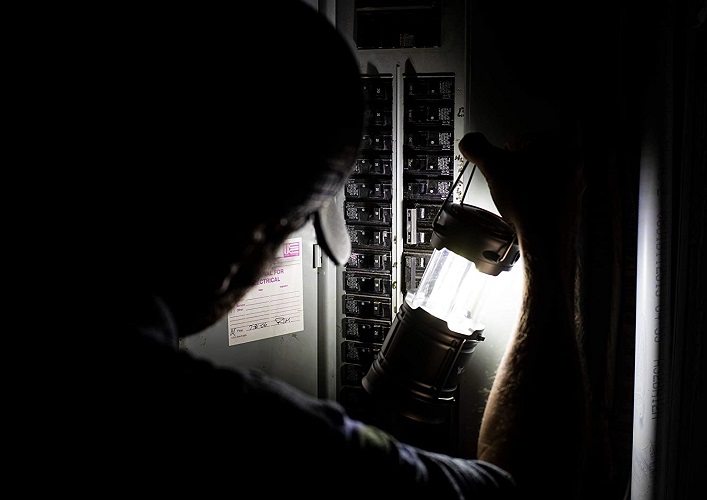
G & F Products
2 Pack 360 LED Lantern Flashlights, Super Bright Emergency Lights with Magnet Base, Battery Powered Outdoor Lighting (200 Lumens)
About this item
- 39 LEDs emit 360-degree super-bright light
- Collapsible design transforms into flashlight or emergency light
- Meets ANSI F1 Standard for light output and resistance
- Averages 200 lumens, with peak output at 250 lumens
- Beam reaches up to 150 meters (500 feet)
- Ideal for room lighting or directional flashlight
- Reliable lighting source for various situations
Bulk Pricing
Below are the available bulk discount rates for each individual item when you purchase a certain amount
- Buy 2 - 11 and get 20% off
- Buy 12 - 23 and get 22% off
- Buy 24 or above and get 24% off

2 Pack 360 LED Lantern Flashlights, Super Bright Emergency Lights with Magnet Base, Battery Powered Outdoor Lighting (200 Lumens)
ANSI/NEMA FL 1-2009 Standard

Details about the FL1 Standard
Commonly abbreviated as the ANSI FL1 Standard, the ANSI/NEMA FL 1-2009 Standard is a set of flashlight performance guidelines. Before the introduction of these standards, you may have seen a variety of phrases on flashlight packaging, such as these:
- “3W LED” was a common term used when high-performance LEDs, such as the Luxeon, were first introduced. LEDs have varying efficiencies and rarely operate at the rated power, so this doesn’t really have any meaning.
- “1 million candlepower” (or any other multiple of a million), is often seen on lanterns and spotlights. A million of anything is impressive, but how bright is one million candles?
- “High-flux LED” is really just a fancy way to say that the LED is bright, but even if you’re an engineer, it still doesn’t have much meaning to it.
Interpreting the FL1 Standard

Now that we have defined these ratings, let’s see what the not-so-obvious ratings mean
Light Output vs. Peak Beam Intensity Although higher output seems like it should correspond to higher intensity, a light with more lumens is not necessarily “brighter.” Here’s why:
- Light output is determined by the total amount of light coming out-the-front (OTF) of the flashlight and is related to the LED’s efficiency and how much power it uses.
- Peak beam intensity represents brightness as perceived by the human eye and is related to how the beam is focused by the optical system (typically a reflector, lens, or optic).
So, which is more important? Light output can be thought of as “raw material,” but it’s how that light is dispersed that determines usefulness. For example, a fluorescent lamp has high output but low intensity (a dispersed, or flood, beam), whereas a laser and has low output but high intensity (a focused, or spot, beam).
Both are useful for their intended purposes, but neither would make a good flashlight. Thus, the candela per lumen (cd/lm) ratio can be used to determine if a flashlight has a spot- or flood-type beam.
- Spot beams (large cd/lm ratio) are great for lighting up distant objects, but at close range, the hotspot may be blindingly bright.
- Flood beams (small cd/lm ratio) are great for close work, but for distant objects, there’s not going to be much light.
As a reference, well-focused spot beams can be over 100 cd/lm, tactical flashlights are typically between 20-100 cd/lm, and work lights are less than 10 cd/lm.
Peak Beam Intensity vs. Perceived Brightness
Brightness, as we think of it in everyday terms, is actually a difficult measurement to grasp numerically. While 10,000cd will appear brighter than 5,000cd, it will not appear twice as bright. The reason is because our perception of brightness is non-linear, meaning that “twice the intensity” will not appear “twice as bright.”
Keeping this non-linear relationship in mind is important for making Peak Beam Intensity comparisons, and a rough estimate is that for a light to appear twice as bright to the eye, four times the intensity is required.
Beam Distance Beam distance is calculated from peak beam intensity, so there is actually no new information here. In addition, a full moon on a clear night is not really a useful amount of light, so don’t put too much weight on this specification.
Run Time

lantern, or can be used as a flashlight for directional lighting. 360 degrees of room, or campsite-filling light, storm night, power outage
Here’s a trick question: when is a 1.5V battery actually 1.5 volts? Ideally, always, but an alkaline battery’s voltage decreases as it discharges, so it would almost never be 1.5 volts. This is why LED flashlights require complex electronics, but not all flashlights behave the same way. To capture this behavior, runtime must be presented as a graph, which is not required by the FL1 Standard.
LED-Resource Abbreviations
Here’s a list of abbreviations for battery types:
- ALKN = Alkaline
- NICD = Nickel-Cadmium
- NIMH = Nickel-Metal Hydride
- LITH = Lithium Primary
- LTON = Lithium-Ion
- LTFP = Lithium-Iron Phosphate (LiFePO4)
Data of #14020 Lantern flashlight according to FL1 Standard by (ANSI)
| Lumens | LIGHT OUTPUT - 200 Lumens on average of 3 testing samples, Peak Output is around 250 Lumens on one test |
| BEAM INTENSITY | 150 Meter in distance = 500 Feet in range, it means this Lantern will be visible with this range. |
| Run Time | runs on 3 AA battery will give you about 10H of continues lighting power |
| Water Resistance [IPX Rating] | IPX4 – water-resistant, or water splashed from all directions |
| Impact Resistance [Meter] | Impact resistance is tested with drops onto a concrete surface at the specified height with all intended accessories, including batteries, installed. |
| Lumens | LIGHT OUTPUT - 200 Lumens on average of 3 testing samples, Peak Output is around 250 Lumens on one test |
| BEAM INTENSITY | 150 Meter in distance = 500 Feet in range, it means this Lantern will be visible with this range. |
| Run Time | runs on 3 AA battery will give you about 10H of continues lighting power |
| Water Resistance [IPX Rating] | IPX4 – water-resistant, or water splashed from all directions |
| Impact Resistance [Meter] | Impact resistance is tested with drops onto a concrete surface at the specified height with all intended accessories, including batteries, installed. |

























